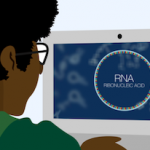 Citizen science is undoubtedly one of the more exciting aspects of crowdsourcing, with a wide range of websites offering the opportunity for people to get involved in all manner of causes. A growing number of these efforts involve games in some way. I wrote about EyeWire last year, who are a site offering gamers the opportunity to improve our understanding of neurology.
Citizen science is undoubtedly one of the more exciting aspects of crowdsourcing, with a wide range of websites offering the opportunity for people to get involved in all manner of causes. A growing number of these efforts involve games in some way. I wrote about EyeWire last year, who are a site offering gamers the opportunity to improve our understanding of neurology.
Suffice to say of course, that the subject matter of many of these issues does a reasonable job in selecting the audience that plays them, which may in many instances not be a natural fit with the usual video gaming community. The popular science television show NOVA is attempting to rectify that situation with the launch of a new citizen science gaming platform aimed squarely at teenagers.
The site, called the RNA Lab, has teamed up with Eterna (who I wrote about earlier this year) to allow players to design their own RNA. The site comes complete with animated videos that explain the science behind the game, plus some tips for newcomers on how the game works. The aim is to give a new audience a fresh way of learning about life sciences.
“We’re thrilled to be partnering with NOVA, because nobody is better at making complicated science accessible to everyone,” says Carnegie Mellon University computer scientist Adrien Treuille, co-creator of Eterna. “They’ve produced a media-rich experience that will help teachers, students, and curious people of all ages learn more about our game and the exciting world of RNA research.”
So how does playing the game help real science? Well, the Eterna puzzles simulate actual molecules, so by attempting to complete them, the players are joining a community that help researchers gain some great new insights. The designs created via the game can eventually be physically synthesized in a laboratory. Evidence from Eterna thus far suggests that humans are better at this kind of experimentation than computer simulations.
The initial results from the Eterna game have been put towards a paper published earlier this year in the Proceedings of the National Academy of Sciences. What’s remarkable is that the paper had 37,000 authors, of which only 10 were professional scientists. Over a two year period, some 4,000 players have graduated to the full research team (out of a total of 133,000). This team has generated 40 new rules for RNA folding, with each rule competing against the best computer algorithms in a series of challenge to test their validity, before then going into the algorithm themselves. The hope is that by teaming up with NOVA, this reach will be extended still further.
Lauren Aguirre, NOVA’s Director of Digital Media, says the Labs fit squarely into NOVA’s broader mission of encouraging science literacy and creating lifelong learners. “By supporting real-world problem solving with the visual and storytelling techniques that drive NOVA’s broadcast productions, the Labs are designed to maximize the potential for learning about science by actually doing it.”